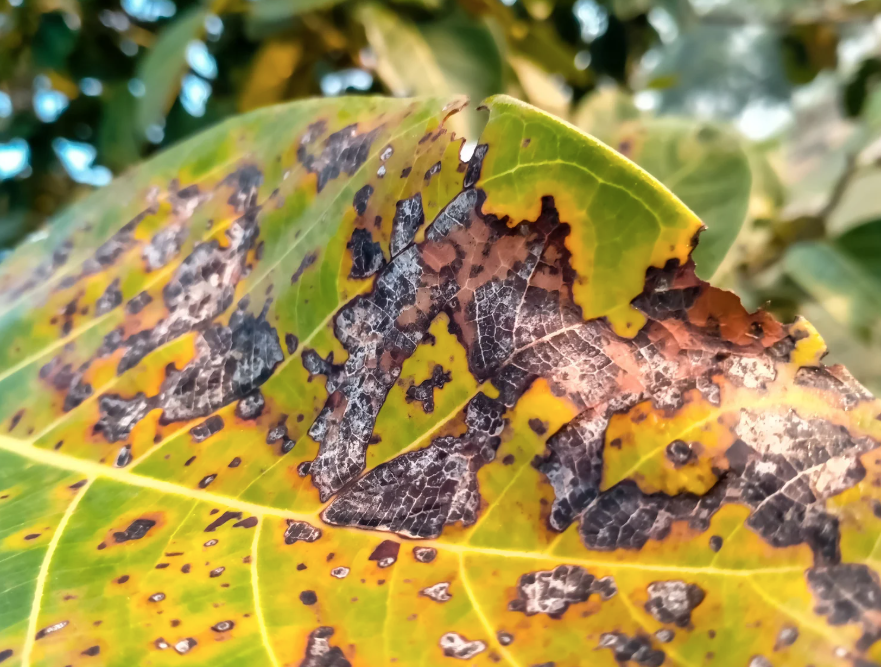Tree disease often isn’t obvious until it’s gotten serious and become widespread. Since many symptoms of tree disease overlap, it’s important to be aware of early signs and take proactive measures when you notice them. Waiting too long can mean loss of beautiful trees, and it can put surrounding plants, trees, and grasses at risk.
6 Early signs of Tree Disease
- Premature Leaf Defoliation or Reduced Foliage: If your trees stop producing leaves or start losing leaves early, it could be a symptom of tree disease.
- Leaf Browning: This isn’t always a sign of a problem. But if it happens all over the tree, very rapidly, or at an unusual time, it’s worth investigating.
- Thin Canopy: If your tree canopy has thinned and looks patchy or bear, its health could be at risk.
- Unusual Needle/Leaf Changes: If trees’ leaves or needles have developed unusual colors, distorted shapes, or dark spots, they could have untreated disease.
- Changes in Tree Bark: Some variation in tree bark is normal, including minor cracks. Significant, deep cracks or splits, however, are often a sign of tree disease.
- Fungi/Root Rot: Signs of fungus (presence of mushrooms) and other soil changes around the tree could mean the tree itself is being harmed by those changes.
Is it always good for trees to grow? That’s a great question with a complex answer. Tree growth and tree health go hand in hand, but overgrowth can cause problems. When a tree has too much growth, light, moisture, and soil nutrients can’t get to all parts of the tree. Pruning regularly (and at the correct time) is another important to-do for keeping trees their strongest.
Common Tree Diseases in Northern, AZ
Common tree diseases in our area include pinion needle scale, comandra rust, seiridium canker, and fire blight. Our guide to tree pests and diseases is an easy way to familiarize yourself with the most common threats to our local trees, which is an important step in treating them. Invasive plants like mistletoe as well as aphids and other pests can also harm and damage trees. Planning and completing timely weed control, landscape maintenance, and pest control are wise steps toward year-round, all-around healthy trees and landscapes.
Don’t Risk Your Trees, Call the Experts
You don’t want to ignore signs of tree sickness or mistakenly over-prune/remove healthy trees. Mistaking or missing signs of tree disease often leads to unexpected tree maintenance and removal costs. And it’s sometimes to distinguish one sign of poor tree health from another.
Keeping trees growing tall and strong is our passion, and we want to keep our Prescott, AZ neighbors’ trees looking their best for years to come. Whether you’re growing fruit trees, flowering trees, or shade trees, our experts can plan and complete timely tree care to keep them growing. Contact Zebrascapes today to schedule an appointment for home tree service.

